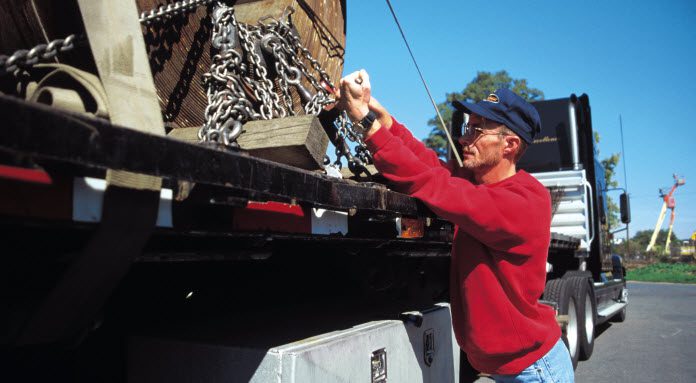Some small carriers and owner-operators may be taking a few vacation days this week. Not coincidentally, Roadcheck, the annual three-day inspection and enforcement event begins Tuesday, June 2. While 10,000 inspectors are performing a 37-step Level 1 inspection at 1,500 roadside locations across the U.S., truckers often prefer to take a few extra days at home. Will these mini-vacations have an effect on freight rates?
Maybe. During Roadcheck week last year, DAT Load Boards saw a 9% decline in truck posts and a 37% increase in load posts. That week followed the week of Memorial Day, so you would expect a 20% to 25% increase in all load board activity. Load and truck posts typically increase in the first full week following a holiday, because there is one more work day — five instead of four.
Van Rates Rose 7¢ During Roadcheck 2014
Why is that important? Well, during the week of Roadcheck 2014, that additional pressure on spot market capacity boosted rates by more than 3%. National average rates, including fuel, jumped 7¢ for dry vans, 8¢ for flatbeds and 6¢ for reefers. Van and reefer rates added a couple more pennies the week after Roadcheck, probably due to typical seasonal and flatbed rates dropped 2¢. Last year was extraordinary in many ways, so we looked at 2013, too. Turns out, the same pattern played out during Roadcheck week 2013: loads up 30%, trucks up 9%, van rates up 8¢ per mile.
Some negatives might emerge this year, however. On the capacity side, the largest carriers bought record numbers of Class 8 trucks last year, and the railroads are transporting record intermodal volume, so shippers have more options than they did in 2014. On the demand side, the economy is a bit sluggish these days, at least according to the revised report that says GDP contracted by 0.7% in Q1. That report was followed by a slump in the stock market and a key index of consumer confidence. So far this week, spot market volume and rates are soft compared to the past two months, let alone June 2014.
More About Roadcheck
Anyway, Overdrive Magazine reported that last year’s Roadcheck yielded “more than 70,000 inspections…resulting in a 22% out-of-service rate for equipment and a 4% out-of-service rate for drivers.” That’s 14 trucks or buses inspected per minute. Granted, it’s a big country, but a long-haul trucker is pretty likely to pass one of the 1,500 inspection stations during the three-day event.
If the vehicle fails inspection of its brakes, tires, wheels, lights or emissions, among other systems, or the driver shows improper or incomplete logs or other paperwork, one or the other could be pulled out of service. This year’s focus will be on cargo securement, giving flatbed truckers an extra incentive to stay home.
Roadcheck is a joint program of the U.S. Department of Transportation’s agency, the Federal Motor Carrier Safety Administration (FMCSA) along with the Commercial Vehicle Safety Alliance (CVSA), a non-profit group.
Roadcheck Guidelines
If you have ongoing business from your regular customers, or just a high-paying load that you just don’t want to pass up, you’ll have trucks on the road this week. They’re probably in good shape, but here’s CVSA’s Roadcheck Checklist and additional guidance on cargo securement, in case you want a quick refresher.
Here is a description of the Level 1 inspection, from the CVSA web site:
Driver: Examination of driver’s license; medical examiner’s certificate and Skill Performance Evaluation (SPE) Certificate (if applicable); alcohol and drugs; driver’s record of duty status as required; hours of service; seat belt
Truck and Trailer: Vehicle inspection report(s) (if applicable); brake systems; coupling devices; exhaust systems; frames; fuel systems; lighting devices (headlamps, tail lamps, stop lamps, turn signals and lamps/flags on projecting loads); securement of cargo; steering mechanisms; suspensions; tires; van and open-top trailer bodies; wheels, rims and hubs; windshield wipers; emergency exits and/or electrical cables and systems in engine and battery compartments (buses)
Hazmat: HM/DG requirements as applicable. HM/DG required inspection items will be inspected by certified HM/DG inspectors.
Check back in next week to see whether those vacationing truckers tipped the balance in favor of higher rates during Roadcheck.

Cargo securement is a major focus of this week’s Roadcheck inspections. The three-day program conducts Level 1 inspections at 1,500 locations across North America.


